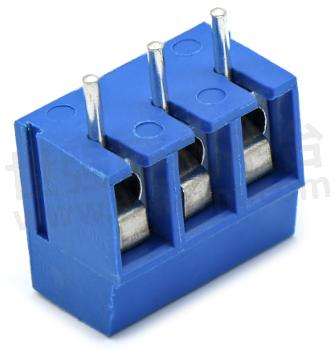Some Common Connection Methods of Industrial Connectors

The industrial connector function is to connect two active components and act as current and signal transmission functions. According to different application objects and environments, connectors are divided into several types, but no matter what kind of connector, it is necessary to ensure the smooth and reliable transmission of electrical signals. With the change in the application environment, a variety of connection modes are derived from the connector to better adapt to the field environment and ensure the stable transmission of signals. Here are some common connection methods.

1. Threaded connection
This is a traditional connection method, which is relatively rare now. It works in some large-size parts or strong-vibration environments. The advantage of this connection form is its strong reliability, and the cable is fixed by the friction of the nut and gear. If you add a fuse to prevent loosening, the effect will be better. The disadvantage is that the disassembly speed is slow, requiring a little electric thread retraction, which is time-consuming.
2. Bayonet connection
This is a popular form of fast connection and separate connection. It is often used to connect two simple electrical components. The connector connected with the buckle will mark the correct buckle locking direction at the buckle. The user can observe whether the buckle is installed in the small hole on the side of the connector nut.
3. Plug connection
Pluggable connection is a common connection method. The plug of the connector can move horizontally during connection and separation without torsion and selection and only needs to complete the connection and separation in a short time. The common plug-in connection has two structures: a ball and a pin. This connection eliminates the traditional mechanical locking mechanism. Once the connector is wrongly inserted, it is difficult to pull it out.
4. Cabinet connection
It is based on the electrical connection mode that needs to be blindly connected to the equipment close to the frame. This method can make the electrical equipment very light, each unit works independently of the other, is easier to maintain, and more reliable. Because the operator of this connection mode cannot perceive the connection, there must be an accurate positioning device to assist the smooth progress of the connection. Floating contact or spring design is usually used to ensure its correct connection.
5. Soldering connection
Welded connection means that a continuous metal shall be formed between the solder and the welding surface. Therefore, the premise of the connector is weldability. The commonly used coatings at the welding end include tin alloy, silver, gold, and other metals. The common welding end of the reed contact pair has a welding piece, punching welding piece, and notch welding piece: the common welding end of the pinhole contact pair has a drilling arc notch.
6. Puncture the connection
Puncture connection, also known as insulation displacement connection, has the characteristics of high reliability, low cost, and convenient use. It has been widely used in connectors in the printing industry. It is applicable to the interconnection between ribbon cables. When connecting, there is no need to puncture the insulation of the cable. With the help of the U-shaped contact reed tip of the connector, slide the cable conductor into the connector groove and fix it, so that the cable is in close contact with the connector.
- +1 Like
- Add to Favorites
Recommend
- What is the Role of Industrial Connectors? What Types of Industrial Connectors Can Be Divided into?
- What Role Do Industrial Connectors Play and What Characteristics Do They Have?
- How to Maintain Industrial Connectors?
- How Are Industrial Connectors Classified?
- Advantages of Industrial Connectors
- In-depth Understanding of the Connection Types of Industrial Connectors
- Smart Industrial Connectors Face Opportunities and Challenges
- Greenconn‘s Industrial Connectors Boost the Upgrading of Industrial Robots and Industrial Automation
This document is provided by Sekorm Platform for VIP exclusive service. The copyright is owned by Sekorm. Without authorization, any medias, websites or individual are not allowed to reprint. When authorizing the reprint, the link of www.sekorm.com must be indicated.





























































































































































































































































































































































































































































































































































































































































































































































































































































































